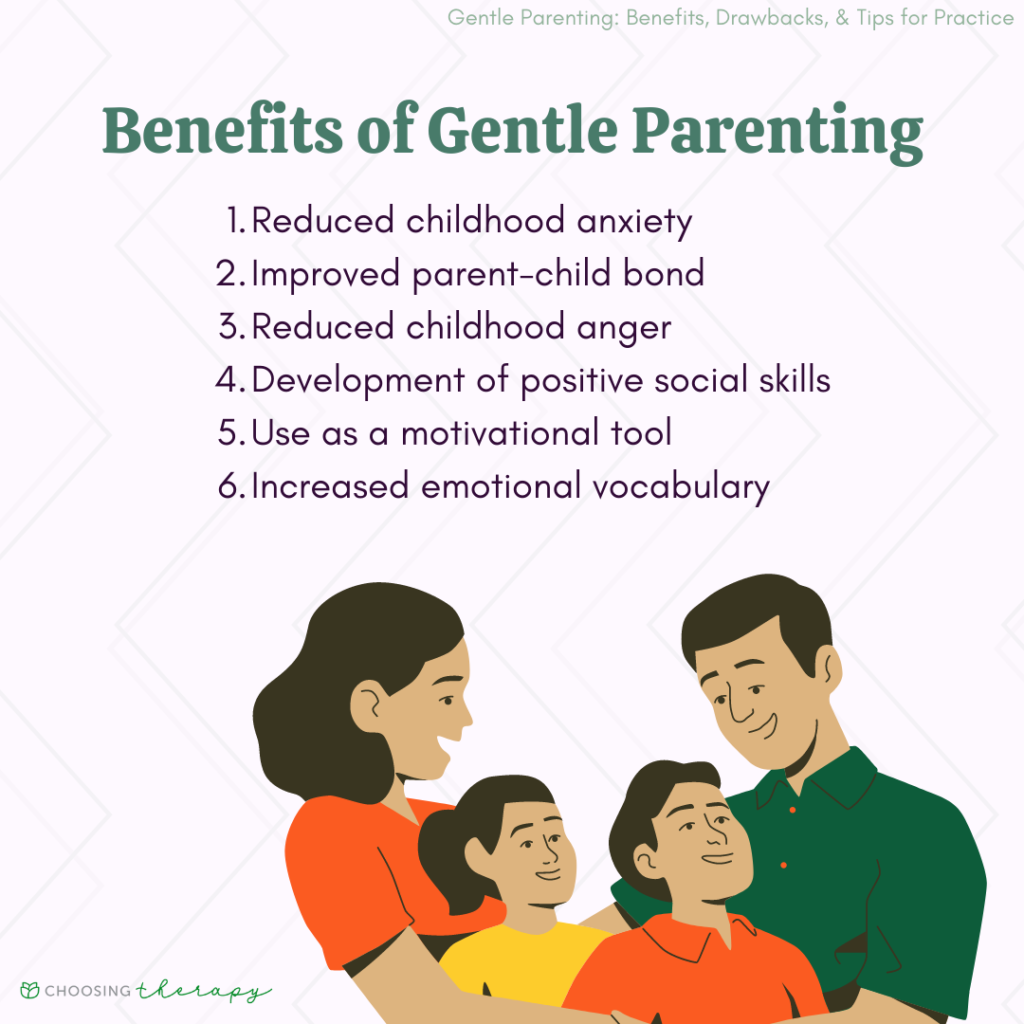Gentle parenting is a child-rearing approach that emphasizes the use of positive reinforcement, empathetic listening, and respectful communication between parents and their children. This parenting style is based on the belief that treating children with kindness, compassion, and understanding leads to better outcomes in terms of child development, behavior, and overall well-being. In this article, we will explore the benefits of gentle parenting and provide practical tips on how to adopt this approach with your own children.
Table of Contents
Understanding Gentle Parenting: What is it?

Gentle parenting is a philosophy that seeks to create a nurturing and supportive environment for children by focusing on their emotional needs, rather than just their behavior. This approach encourages parents to use positive reinforcement and praise to motivate good behavior, rather than punishment or criticism. By using gentle discipline techniques, such as redirection, setting boundaries, and modeling appropriate behavior, parents can teach children to make positive choices and develop self-esteem.
The Benefits of Gentle Parenting for Child Development

Research has shown that gentle parenting techniques have a positive impact on child development. Children who are raised in a nurturing and supportive environment tend to be more confident, independent, and emotionally secure. They also tend to have better self-regulation skills and are less likely to exhibit behavioral problems or engage in risky behaviors. Gentle-parenting can help children develop strong social skills, empathy, and a sense of responsibility.
The Benefits of Gentle-Parenting for Parent-Child Relationships

Gentle parenting can also have a positive impact on parent-child relationships. When parents use positive reinforcement and praise, they create a strong bond of trust and respect with their children. This approach encourages open communication and encourages children to share their thoughts and feelings with their parents. As a result, parents can better understand their children’s needs and respond to them in a more effective way.
Tips for Practicing Gentle Parenting
If you are interested in adopting gentle parenting techniques, here are some practical tips to help you get started:
- Focus on Positive Reinforcement – Instead of criticizing your child for negative behavior, try to praise them for positive behavior. This will help reinforce good behavior and motivate your child to continue making positive choices.
- Listen to Your Child – Empathetic listening is a key component of gentle-parenting. When your child is upset or frustrated, take the time to listen to their concerns and validate their feelings.
- Set Boundaries – Setting clear boundaries and expectations can help your child feel safe and secure. However, it is important to do so in a gentle and respectful manner, rather than using harsh discipline.
- Model Appropriate Behavior – Children learn by example, so it is important to model the behavior you want to see in your child. For example, if you want your child to be kind and compassionate, be sure to show them those qualities in your own actions.
- Use Redirection – Instead of punishing your child for negative behavior, try redirecting their attention to a more positive activity. This can help your child learn to make positive choices and avoid negative behaviors.
Conclusion
Gentle parenting is a child-rearing approach that emphasizes positive reinforcement, empathetic listening, and respectful communication. This approach can have a positive impact on both child development and parent-child relationships. By adopting gentle parenting techniques, parents can help their children develop strong social skills, empathy, and a sense of responsibility. If you are interested in practicing gentle parenting, try focusing on positive reinforcement, empathetic listening, setting boundaries, modeling appropriate behavior, and using redirection techniques.
Learn about: Join the Parental Guidance Cast today and discover the secrets to finding joy in parenting like never before




